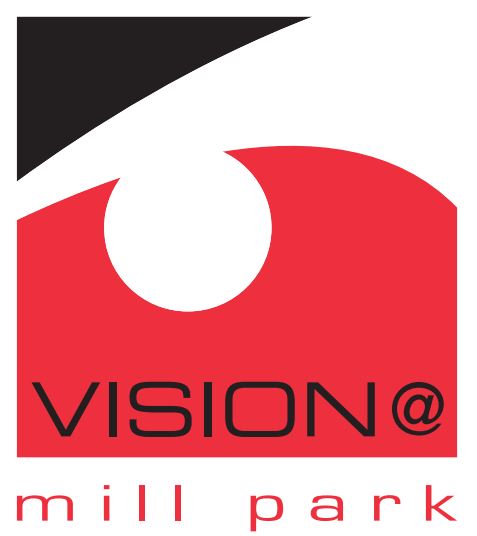Written by Dr Vin Lin Yang, OD
I remember my first pair of myopia glasses was when I was 14 years old. At the time, I had trouble looking at the whiteboard at school and noticed I tend to squint my eyes a lot during class time. Little did I know that squinting and leaving my vision uncorrected for the whole year ultimately made my vision worse. As a studious student during high school, I tended to focus on studying and spent a fair bit of time doing close work. I did not really spend time outdoors on the weekend and hence my myopia worsened.
In a world dominated by screens and close up tasks, myopia, also known as shortsightedness, has become a global epidemic. It is predicted by 2050, 50% of the population will be myopic. Myopia is when the eye has gone through accelerated eye growth resulting in an elongated eyeball- this causes objects at a distance to become blurred. The higher the myopia, the higher risk for eye diseases such as maculopathy, retinal detachment, and cataracts.
Figure 1: The WHO estimates 52% of the world’s population will be myopic by 2050, up from just 22% in 2000. Adapted from: The Report of the Joint World Health Organization-Brien Holden Vision Institute Global Scientific Meeting on Myopia. Source: https://www.reviewofoptometry.com/article/myopia-should-we-treat-it-like-a-disease
Over the months and years, I noticed I need to update my glasses more regularly and my glasses lenses were getting thicker and thicker between eye tests. Without my glasses, it was becoming more and more difficult to see. By university, I was keen to try soft contact lenses and found more confidence without glasses, however my prescription was still increasing. My myopia continued to progress till my mid-twenties, and I am now four times more myopic compared to when I was first diagnosed with myopia. This puts me at a 8 times higher risk of eye diseases such as myopic maculopathy and retinal detachments¹.
When I was growing up, glasses and contact lenses were only optical options to correct myopia. Fortunately with the latest research evidence, there are now interventions to correct myopia and slow down myopia progression². This is referred to as Myopia Control or Myopia Management, a new and exciting field in optometry. More and more children are developing myopia, and the younger the child with myopia, the faster the myopia progresses. Addressing myopia in childhood can significantly reduce its progression.
There is a correlation between outdoor activities and myopia control. The eyes focusing muscles are always relaxed outdoors. When we spend time outdoors, our eyes are also exposed to natural light, especially sunlight. Being exposed to sunlight provides protective benefits in preventing myopia onset and slowing down myopia development. We recommend at least 2 hours of outdoor play each day to reduce the risk of myopia progression, and less than 2 hours on a screen each day after school.
Figure 2: Visual Environment Advice for Reducing Myopic Progression. Source: https://www.mykidsvision.org/knowledge-centre/understanding-the-myopia-profile-infographic
Myopia progression is impacted by prolonged near work. Simple lifestyle tips such as incorporating regular eye breaks during close work aids in myopia control. For example, the 20-20-20 rule; for every 20 minutes of near work, look 20 feet away (look out in the distance or window) for 20 seconds.
Our optometry practices uses the latest evidence based practice and equipment in managing myopia control. There is no one treatment which is the best, but we assess which would be most suitable for your child based on their prescription, eye focusing and structure³. The following interventions can reduce eye growth by up to 50%.
- Myopia control glasses: Stellast and Miyosmart lenses. These glasses corrects distance vision and provide soft defocus near vision to slow myopia progression
- Misight multifocal contact lenses. Soft lenses worn in the daytime that correct vision and slow myopia progression.
- Orthokeratology contact lenses. Custom design rigid lenses which are worn at night and known as “braces for the eyes”. At waking, the eye is flattened and vision is corrected without the need of glasses or contacts.
- Low dose atropine 0.025, and 0.05% combined with traditional single visions glasses to slow down myopia progression. These drops need to be specially made at a compounding pharmacy and be used each night.
It’s common for patients to start with one type of myopia control option and change or even combine myopia control treatment options during different ages and depending how their eyes respond to treatment. Generally, treatment is continued until the eye stops growing. We measure eye growth, also known as axial length, with our biometer, and plot this result against the age based normal ranges.
We feel very fortunate to be able to take advantage of the latest clinical research and offer a personalised myopia management strategy for your child. If your child has myopia or has a family member with myopia, a comprehensive eye test with one our our optometrists is the best place to start.
You can schedule an eye examination by calling us on 9436 0404 or instantly book online. For more information regarding myopia control, visit My Kids Vision.
.
.
Published 8th of January 2024
.
References:
1. Tideman JW, Snabel MC, Tedja MS, van Rijn GA, Wong KT, Kuijpers RW, Vingerling JR, Hofman A, Buitendijk GH, Keunen JE, Boon CJ, Geerards AJ, Luyten GP, Verhoeven VJ, Klaver CC. Association of Axial Length With Risk of Uncorrectable Visual Impairment for Europeans With Myopia. JAMA Ophthalmol. 2016 Dec 1;134(12):1355-1363.
2. Gifford KL, Richdale K, Kang P, Aller TA, Lam CS, Liu YM, Michaud L, Mulder J, Orr JB, Rose KA, Saunders KJ, Seidel D, Tideman JWL, Sankaridurg P. IMI – Clinical Management Guidelines Report. Invest Ophthalmol Vis Sci. 2019 Feb 28;60(3):M184-M203
3. Brennan NA, Toubouti YM, Cheng X, Bullimore MA. Efficacy in myopia control. Prog Retin Eye Res. 2021 Jul;83:100923
.




